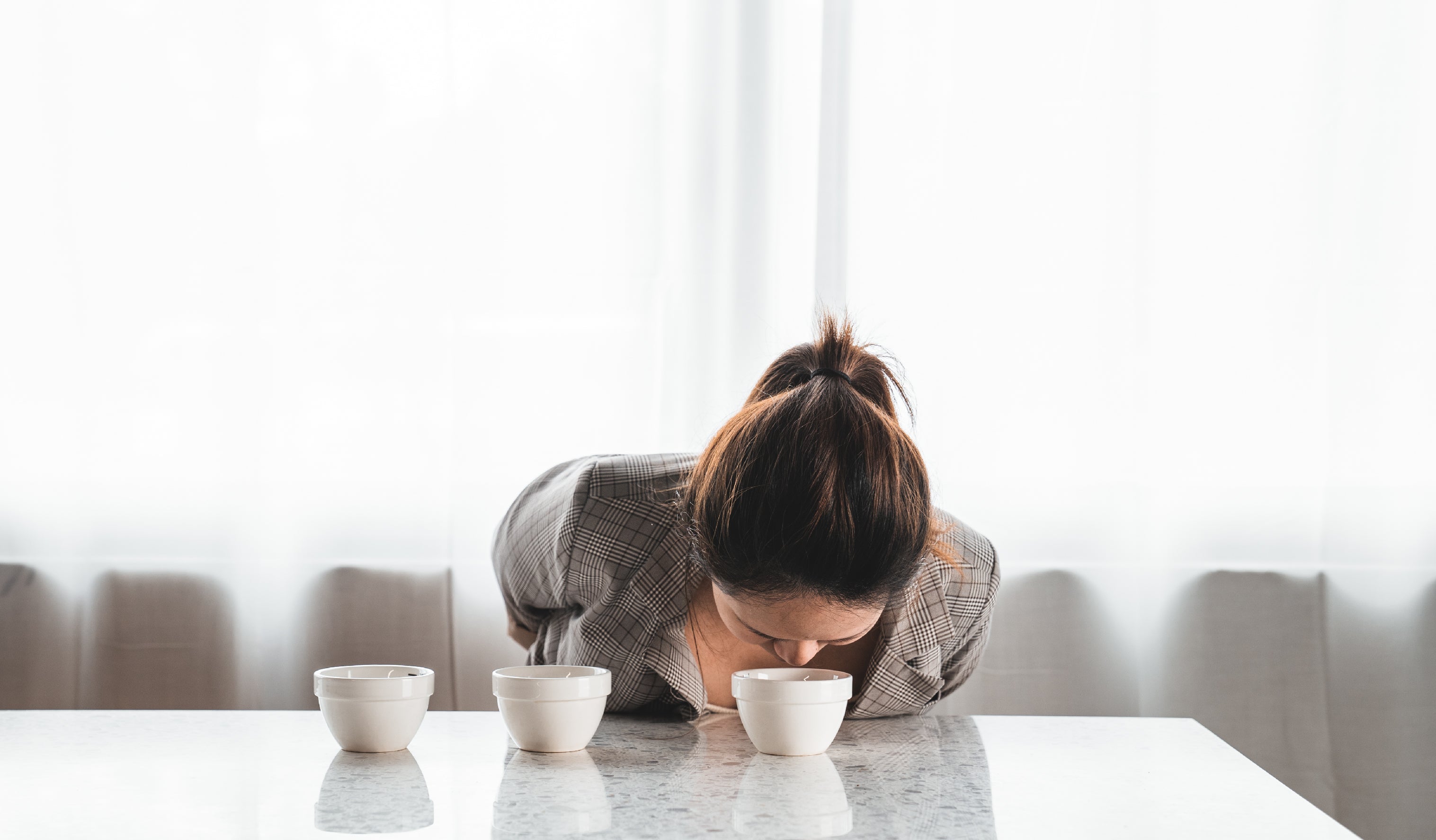What you'll need
- 3 different types of coffee beans (whole/ground)
- Boiling hot water from an electric kettle
- 6 vessels of same shape and size (~220ml)
- Deep, rounded tablespoons
- Stopwatch
- Weighing scale

Step 1
Weigh out 12g samples of coffee and grind them into each vessel. Purge the grinder with an additional 0.5g before grinding each new bean.We like to do duplicate samples for each coffee as a test of consistency across the two samples.

Step 2
Take a whiff of the coffee grounds, paying attention to the dry fragrance of each cup. What does the smell remind you of?

Step 3
Set the kettle to boil, and once boiled, leave out to cool for 1-2 minutes to reach desired temperature of 94°C.

Step 4
Start the stopwatch and add 220ml of hot water into the vessels, making sure to wet all the coffee grounds. Additionally, pour some hot water into an additional empty vessel for cleaning used spoons.
Step 5
On the 4-minute mark, ‘break’ the crust of the coffee by pushing forward on the surface of the coffee with a spoon thrice.Here, draw in an evaluate the wet aroma of the coffee. How has it translated from the dry fragrance and are there any new aromas that have emerged?

Step 6
With two spoons, clear the excess grounds off the top of the cup surface. Rinse the spoons in the cleaning vessel filled with hot water and wait for the coffee to cool.

Step 7
Start tasting at the 11 minute mark by taking a small scoop of coffee and drinking it.What is the texture of the coffee in your mouth? What flavours stand out, and how does the finish feel like?

Step 8
Rinse the spoon in the cleaning vessel, drip dry and repeat!

Step 9
Continually cup the samples as they slowly cool towards room temperature. How does the taste profile change as it cools, and what are some distinctive characteristic of each coffee?

Step 10
When everyone is done, come together and take turns to share findings with your fellow cuppers! How do the cups differ from each other, and which is your favourite cup? Why?

Additional Notes:
Grind size
We use a medium coarse grind size for cupping, usually slightly coarser than our V60 filter brews. It is more important to ensure that all the coffees are of the same grind size, than to get the exact grind size we use.
SCA cupping wheel
Identifying tasting notes is often difficult, and we utilise the SCA Coffee Taster’s Flavor Wheel to help codify what we taste into a commonly understood vocabulary.
Slurping Coffe
You might notice that some people slurp their coffees when cupping, so loudly that it almost appears to be aggressive. The key principle behind slurping our coffees is aeration, which helps to spread the coffee across our entire palate and in to our noses.

Origins, varietals, and processing methods all play a part in the differences in tastes of each coffee. Cupping more samples with the help of the SCA Flavour Wheel hones your ability to identify tastes as your palate gradually relates to the vocabulary used to describe coffee.Cupping can often be done with a small set-up. The equipment we have listed above is sufficient for starting out with cupping at home. At Homeground, we use almost the same set of equipment, but with minor additions: the usage of freshly ground coffee and temperature-specific water help us to cup consistently across many cups!As a parting word, cupping as an activity is most enjoyable when done with our friends, and it is with joy that we are able to find our greatest learning.
Journal Archive

Milk in World Barista Competitions
An overview of milk concentration methods in coffee competition, focusing on freezing techniques that enhance milk's qualities for great coffee beverages.

How Coffee Cup Colours Affect Your Drinking Experience
Cross-modal perception of colours on the taste of coffee
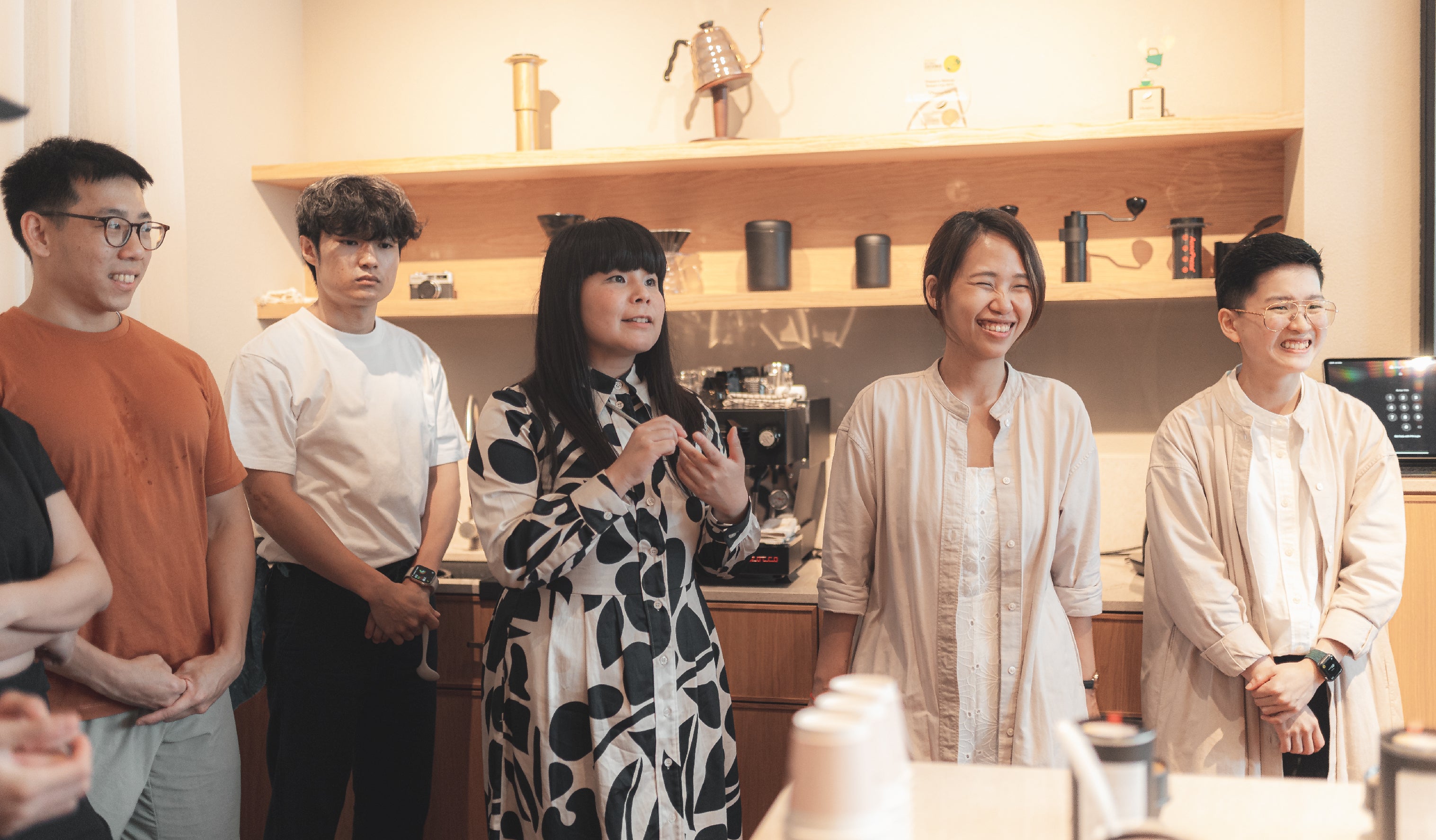
Learning to enjoy more
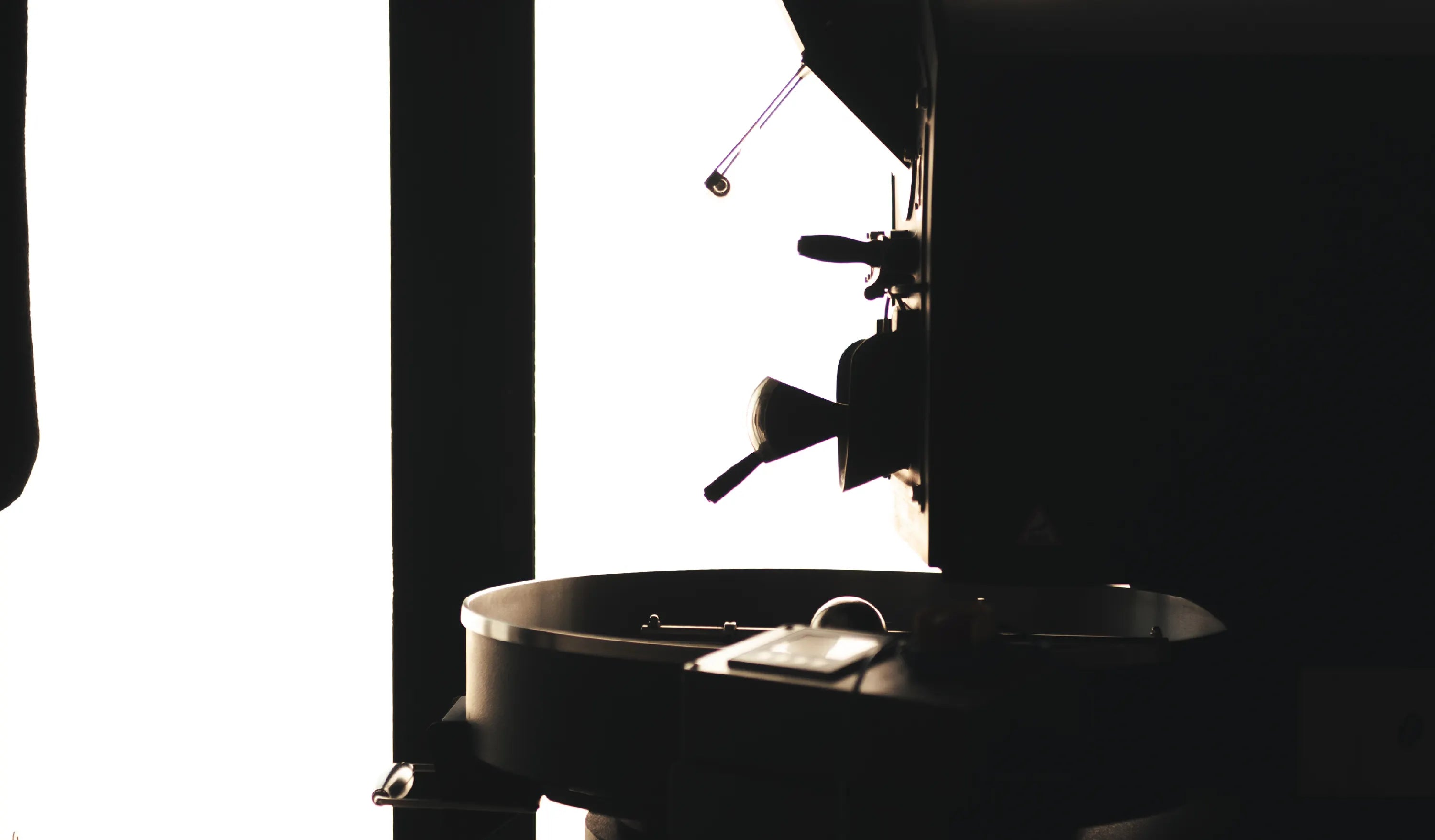
Same Coffees Everywhere, All at Once
Why do local specialty coffee shops serve the same coffees?
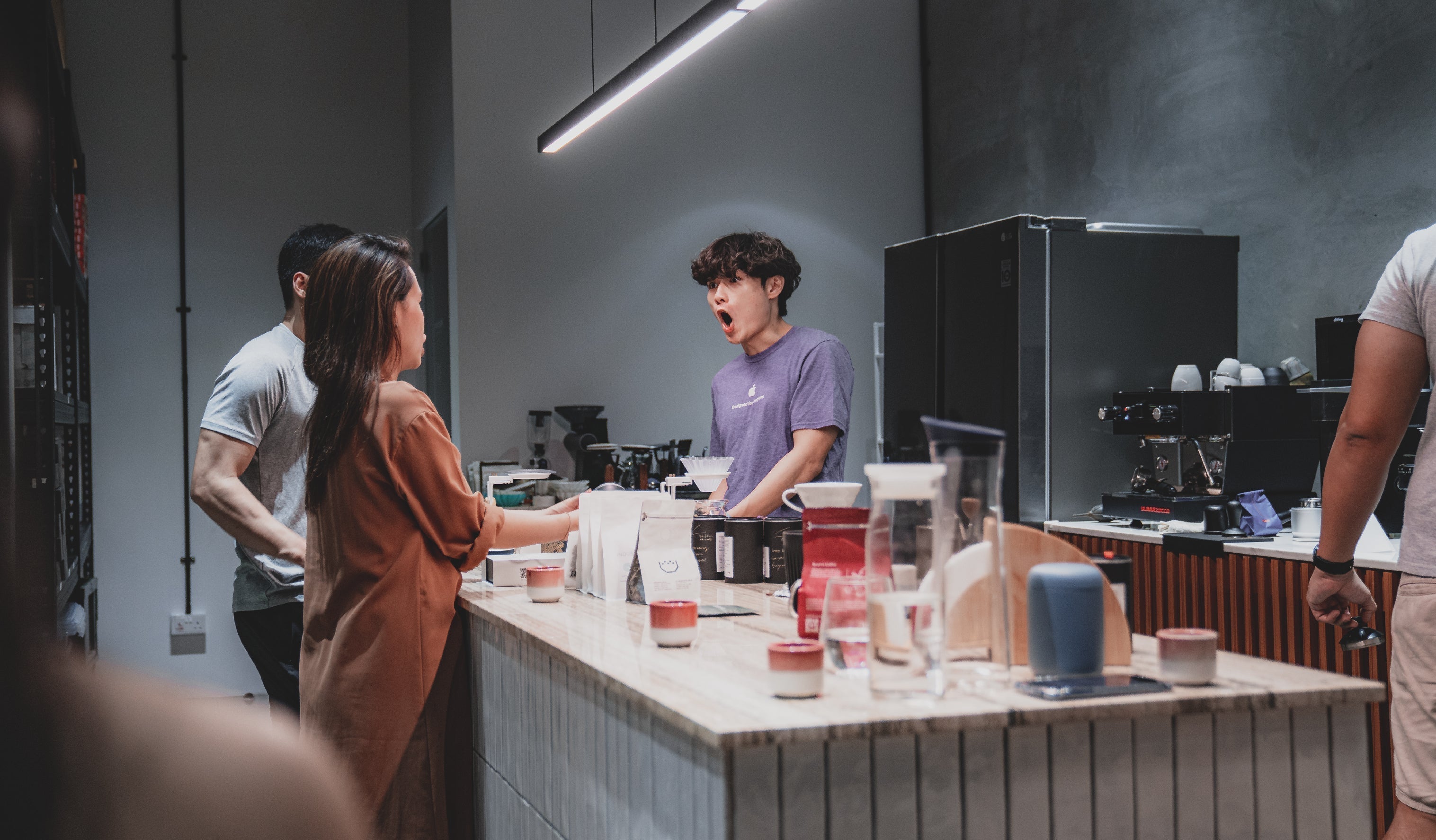
A study of unexpected coffee production nations
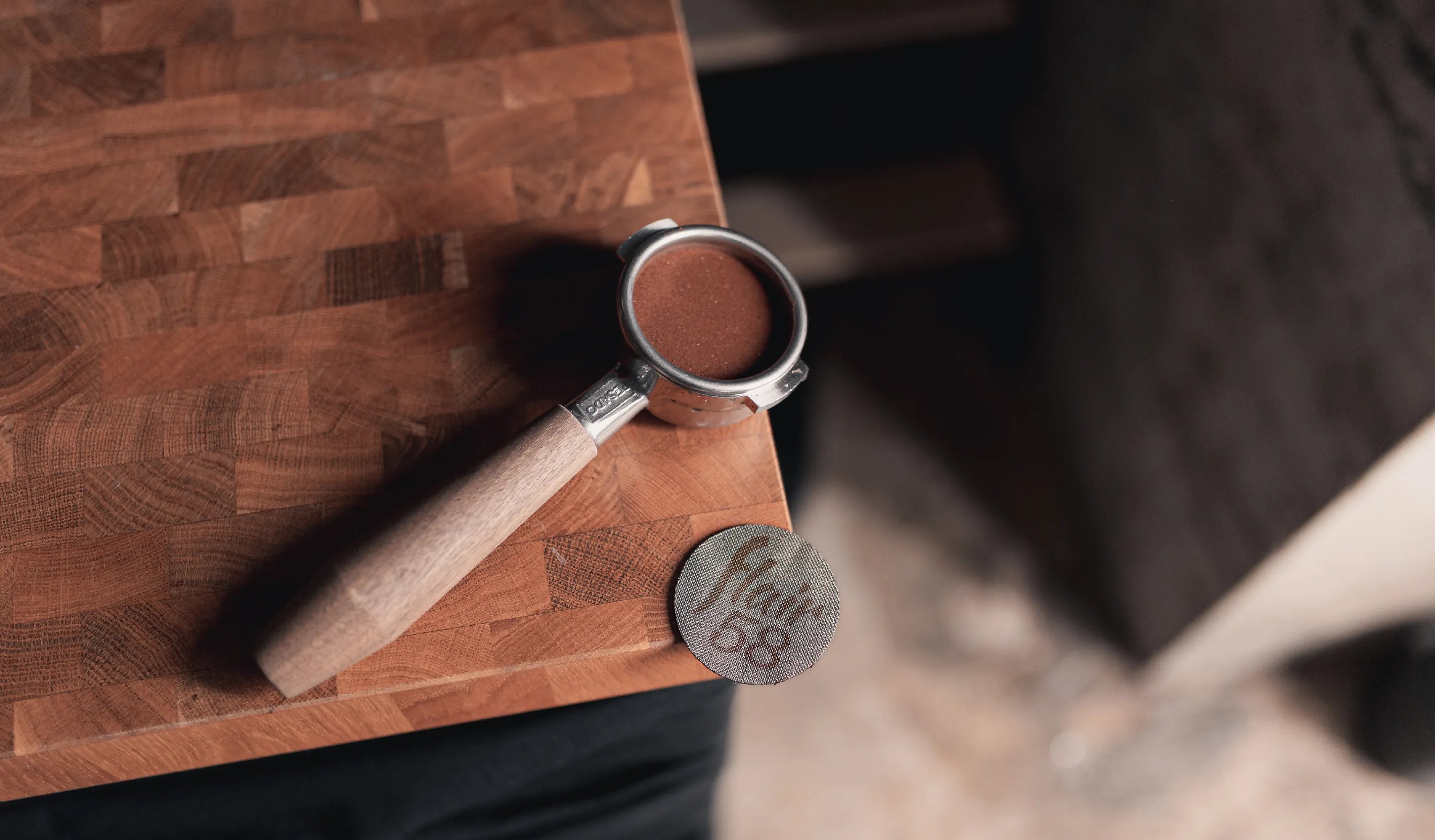
A low down on using puck screens for espresso machines


